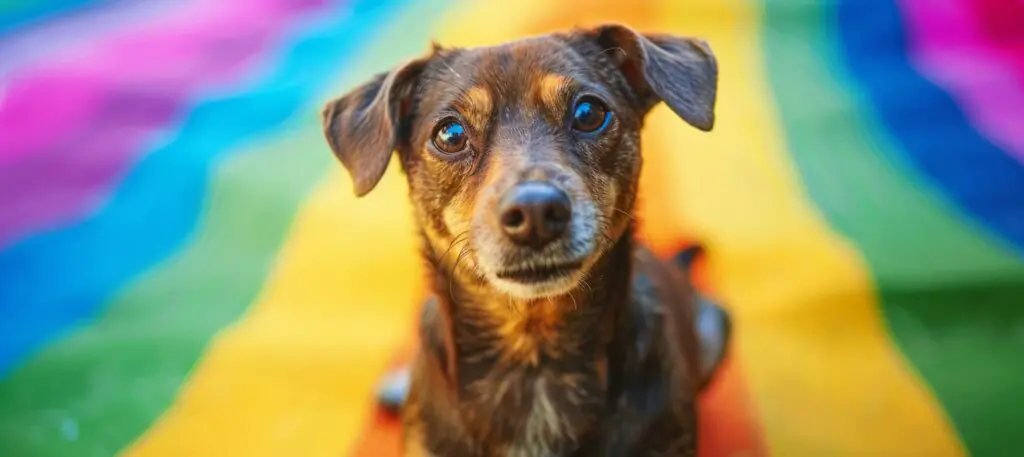
What colours can dogs see the most?
Did you know due to our four-legged friends having dichromatic vision (the ability to see only one or two colours), the colours that are most appealing to them are blue and yellow? However, colours such as red or green are most likely to be simply perceived as a different shade of grey!
You may notice that many dog toys come in different shades of blue and yellow and you might find that your dog is more attracted to toys of this colour. So, is your four-legged friend’s favourite toy blue or yellow? Or perhaps their favourite treats is a certain colour? We’d love to know via our socials!

Furthermore, our furry-friends are more likely to see what we would class as ‘hues’ of different colours. Where we would see a colour to be bright, most of the colours that dogs see are more gentle shades of these brighter colours.
Why may it be important to understand what colours dogs can see?
When it comes to training your dog, it can be useful to understand the colour vision they have so that you can select objects, dog toys and dog treats that they will best respond to. Blue and yellow are also easily identifiable against most background colours; for example, when training on grass the grass is going to look like a dull shade of grey and the yellow/blue toy will stand out to your dog – hopefully making dog training just that little bit easier. You may also notice many dog handlers wear blue or yellow clothing, this again is for the purpose of adding to that visual stimulation for your pup!
What is the difference between human eyes and dog eyes?
Humans have a three-cone retina – which essentially just means we can see a vast array of different colours, hues, shades and vividness. Dogs, on the other hand, only have two-cone retinas. The difference here is that they can still pick up colours, but they are just less vibrant, and they can only really establish two main shades.


